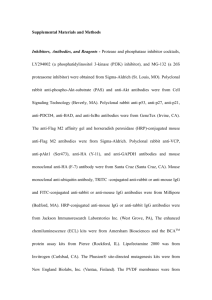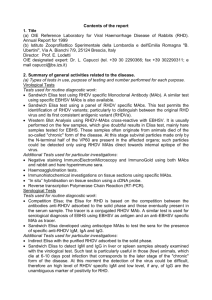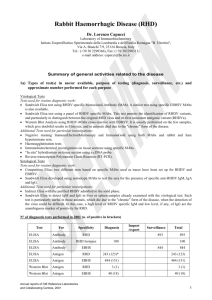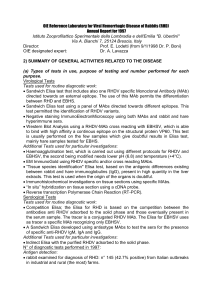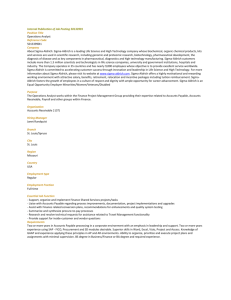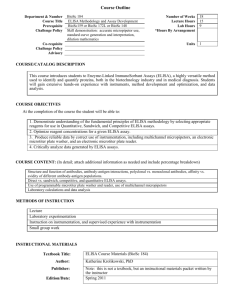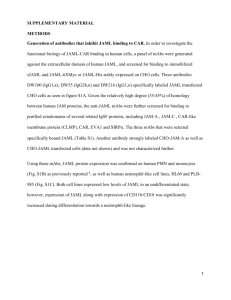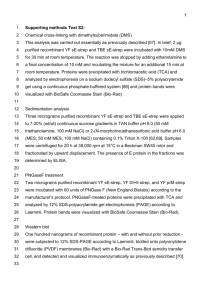Supplementary Information - HAL
advertisement
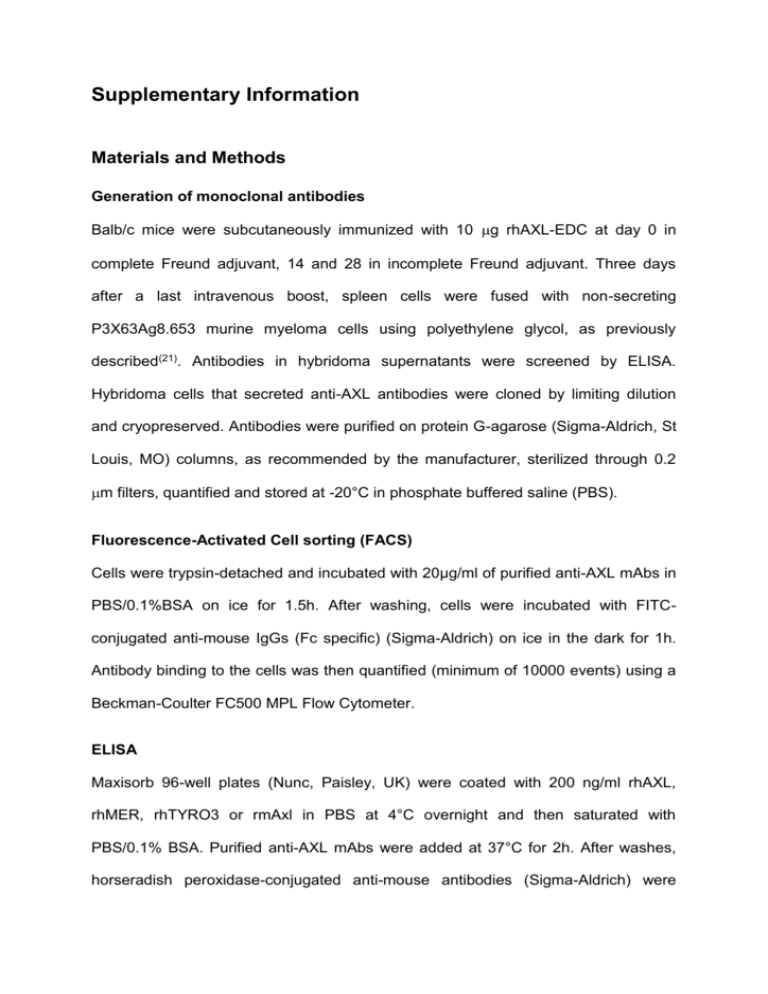
Supplementary Information Materials and Methods Generation of monoclonal antibodies Balb/c mice were subcutaneously immunized with 10 g rhAXL-EDC at day 0 in complete Freund adjuvant, 14 and 28 in incomplete Freund adjuvant. Three days after a last intravenous boost, spleen cells were fused with non-secreting P3X63Ag8.653 murine myeloma cells using polyethylene glycol, as previously described(21). Antibodies in hybridoma supernatants were screened by ELISA. Hybridoma cells that secreted anti-AXL antibodies were cloned by limiting dilution and cryopreserved. Antibodies were purified on protein G-agarose (Sigma-Aldrich, St Louis, MO) columns, as recommended by the manufacturer, sterilized through 0.2 m filters, quantified and stored at -20°C in phosphate buffered saline (PBS). Fluorescence-Activated Cell sorting (FACS) Cells were trypsin-detached and incubated with 20µg/ml of purified anti-AXL mAbs in PBS/0.1%BSA on ice for 1.5h. After washing, cells were incubated with FITCconjugated anti-mouse IgGs (Fc specific) (Sigma-Aldrich) on ice in the dark for 1h. Antibody binding to the cells was then quantified (minimum of 10000 events) using a Beckman-Coulter FC500 MPL Flow Cytometer. ELISA Maxisorb 96-well plates (Nunc, Paisley, UK) were coated with 200 ng/ml rhAXL, rhMER, rhTYRO3 or rmAxl in PBS at 4°C overnight and then saturated with PBS/0.1% BSA. Purified anti-AXL mAbs were added at 37°C for 2h. After washes, horseradish peroxidase-conjugated anti-mouse antibodies (Sigma-Aldrich) were added for 1h and o-Phenylenediamine dihydrochloride (Sigma-Aldrich) was used as substrate as recommended by the manufacturer. Absorbance was measured at 450 nm with an ELISA plate reader. Phosphorylated AXL measurement by ELISA 1 x 106 cells were grown in 6-well plates for 24h and then switched to serum-free medium. Cells were then incubated, or not, with 100 g/ml purified anti-AXL mAbs for 1.5h, followed by 200 ng/ml rhGAS6 for 30 minutes. Cells were then lysed and protein concentration determined with the BC assay Protein Quantitation Kit (Interchim, Montluçon, France). The PathScan® Phospho-Axl (PanTyr) Sandwich ELISA Kit (Cell Signaling Technology) was used for quantifying phosphorylated AXL according to the manufacturer’s instructions. Absorbance was measured at 450 nm with an ELISA reader. Surface Plasmon Resonance analysis by BIACORE Analysis of the interaction of the anti-AXL mAbs with AXL ECD and of their competition with GAS6 was performed on a BIACORE 3000 instrument (BIACORE AB, Uppsala, Sweden) at 25°C with HBS-EP (10 mM HEPES, 150 mM NaCl, pH 7.4, 0.005% surfactant P20 buffer) as running buffer. Recombinant human AXL-Fc fusion protein was immobilized on a CM5 sensor chip using an amine coupling kit (Biacore AB). The control flow cell was treated only with chemical reagents without protein. For competition studies, a saturating concentration (625 nM) of rhGAS6 was injected onto the AXL-Fc-coated chip before injection of 666 nM anti-AXL mAbs. To validate our results, the reverse experiment (first injection of anti-AXL mAbs and then of rhGAS6) was carried out.

